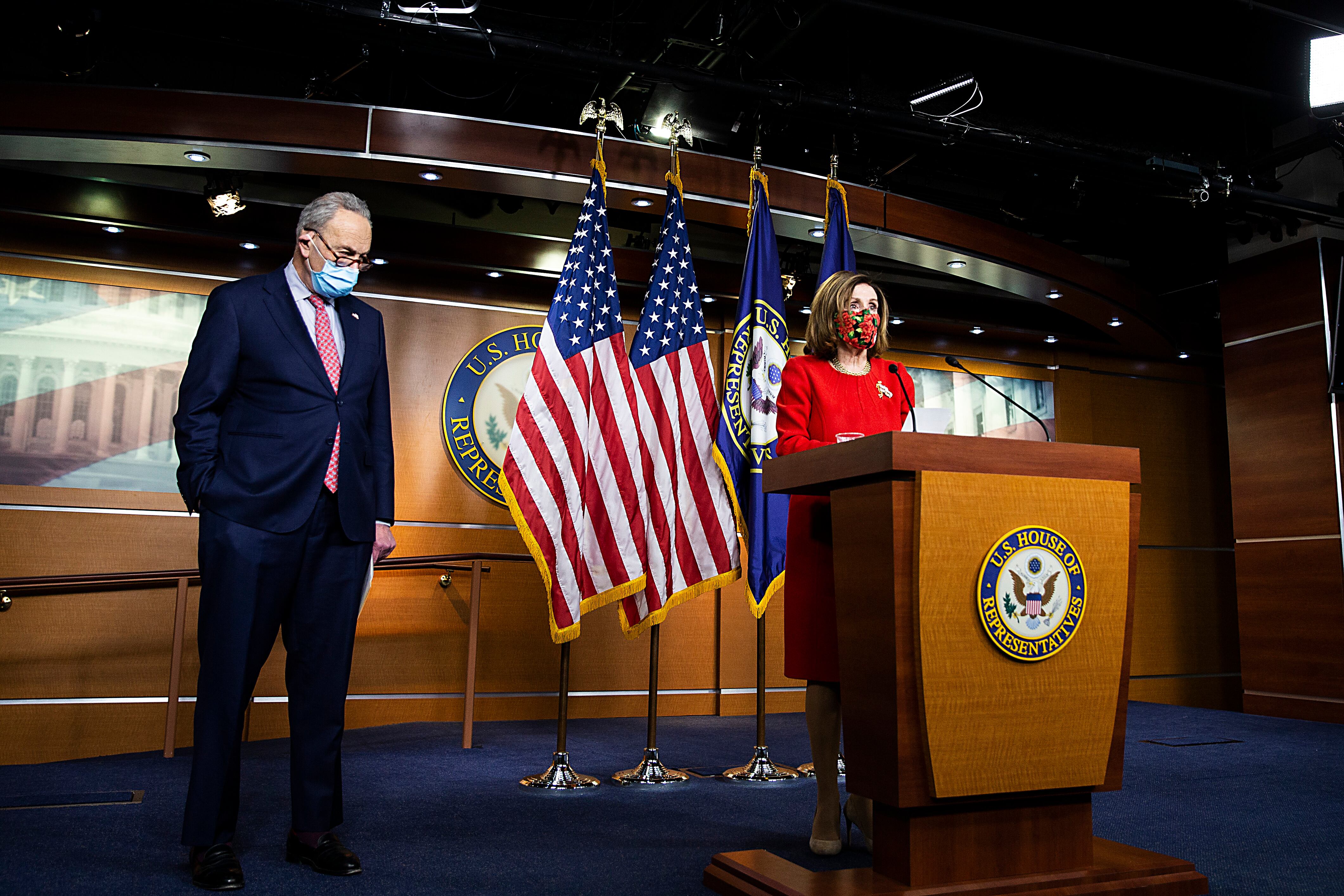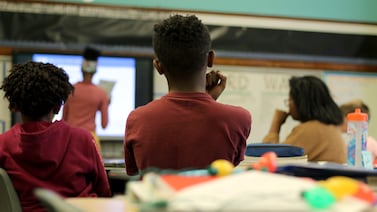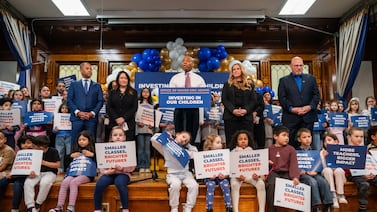Public schools are set to receive a major infusion of money from the stimulus package Congressional leaders agreed to this weekend: $54 billion, or four times what they received from the coronavirus relief bill passed in March.
The news caps a lengthy period of anxiety and uncertainty for school officials. As negotiations stopped and started for months, those leaders have worried that they did not have what they needed to safely staff their school buildings, address learning loss among their students, and make up for possible budget cuts at the state level. All told, the package, which could be approved later today, provides an average of about $1,000 per public school student.
Crucially, though, the bill does not include additional money to help fill state budget gaps. That means that some or all of the money for schools could ultimately be canceled out by state budget cuts. It also won’t be enough for a far-reaching national effort, like small-group tutoring, to help students who have fallen behind due to the pandemic.
“It is likely nowhere near what we’ll need to both fund baseline operations and put programs in place to begin to address learning loss,” said Rebecca Sibilia, who previously led the school funding group EdBuild and has been tracking state budgets.
But some officials were hopeful that new money would be a good start as long as there aren’t major state funding cuts. “The new federal stimulus dollars will help inject needed academic supports and strategies to not only focus on learning recovery, but also learning acceleration through the current year and into next year,” said Nolberto Delgadillo, the chief financial officer of Tulsa Public Schools.
The nearly $900 billion stimulus package — hammered out by Congress this weekend and attached to a regular spending bill — includes a total of $82 billion for education: $23 billion for higher education, $4 billion for governors to distribute (much of which must go to private schools), and $54 billion for K-12 public schools.
That $54 billion is a major chunk of money for public schools, close to what the federal government spends in a normal year on K-12 education. And it’s far more than the $13 billion that Congress approved in the last aid bill.
Still, the allocation is far short of the $150-250 billion that some public school groups had sought.
“While this deal is both too late and not perfect, it is a necessary lifeline that we support,” said Randi Weingarten, president of the American Federation of Teachers, which had pushed for a much larger aid package.
“Let us be very clear, this bill can be seen as nothing more than a down payment in doing what is truly necessary to fully address the needs of students, educators and their families,” said National Education Association President Becky Pringle, who noted the lack of aid to states and cities.
President-elect Joe Biden has promised to push for more.
“This action in the lame duck session is just the beginning,” Biden said in a statement Sunday. “Our work is far from over.” But another bill is contingent on cooperation from Congress, which is highly uncertain, as control hinges on two Georgia Senate races next month.
The bulk of the money earmarked for K-12 schools will be distributed through the Title I formula, which generally means that high-poverty school districts will get more.
Schools will be able to use the money in many ways, including improving ventilation, buying technology to support remote instruction, or offering summer school or after school programs. Allowable items also include things principals need “to address the needs of their individual schools.”
Schools’ financial pictures are complicated right now. On the one hand, schools in most places have not faced state budget cuts, as the economic hit to states hasn’t been as bad as many feared. Many schools have also saved money with their buildings closed.
But schools aren’t out of the financial woods yet. Cuts could eventually come from states, which provide nearly half the dollars that fund public schools, and an even greater share of funds for high-poverty districts. Together, states are projecting budget shortfalls this year of about $100 billion, and experts predict that they will face shortfalls in the following year, too.
Congressional Democrats pushed for months to include money dedicated to filling those gaps, but the idea faced widespread Republican opposition and was not included in the final deal. That means that schools still face significant uncertainty around that part of their budgets.
It’s also unclear whether additional money will prompt more school districts to open up their buildings.
When talks around additional relief began this summer, money for school reopening was a major focus. Republicans even proposed restricting some aid to schools that physically reopened. More recently, though, districts that haven’t reopened buildings have cited a litany of other concerns: reluctance from teachers and families, rising COVID case counts, and the challenges of offering both in-person and virtual instruction. According to one recent estimate, about half of American public school students attend school in a district that is fully virtual.
Meanwhile, school leaders are still contending with another major challenge: learning loss. Some officials had hoped that new federal money could be used to pay for things like tutoring programs, extended school days, or smaller class sizes.
Jonathan Travers, a consultant with Education Resource Strategies, said at a recent meeting of school financial leaders from across the country, the officials discussed how much they would invest to help close new academic gaps. One answer: “I’m going to invest as much as a new stimulus gives me money to do so.”






